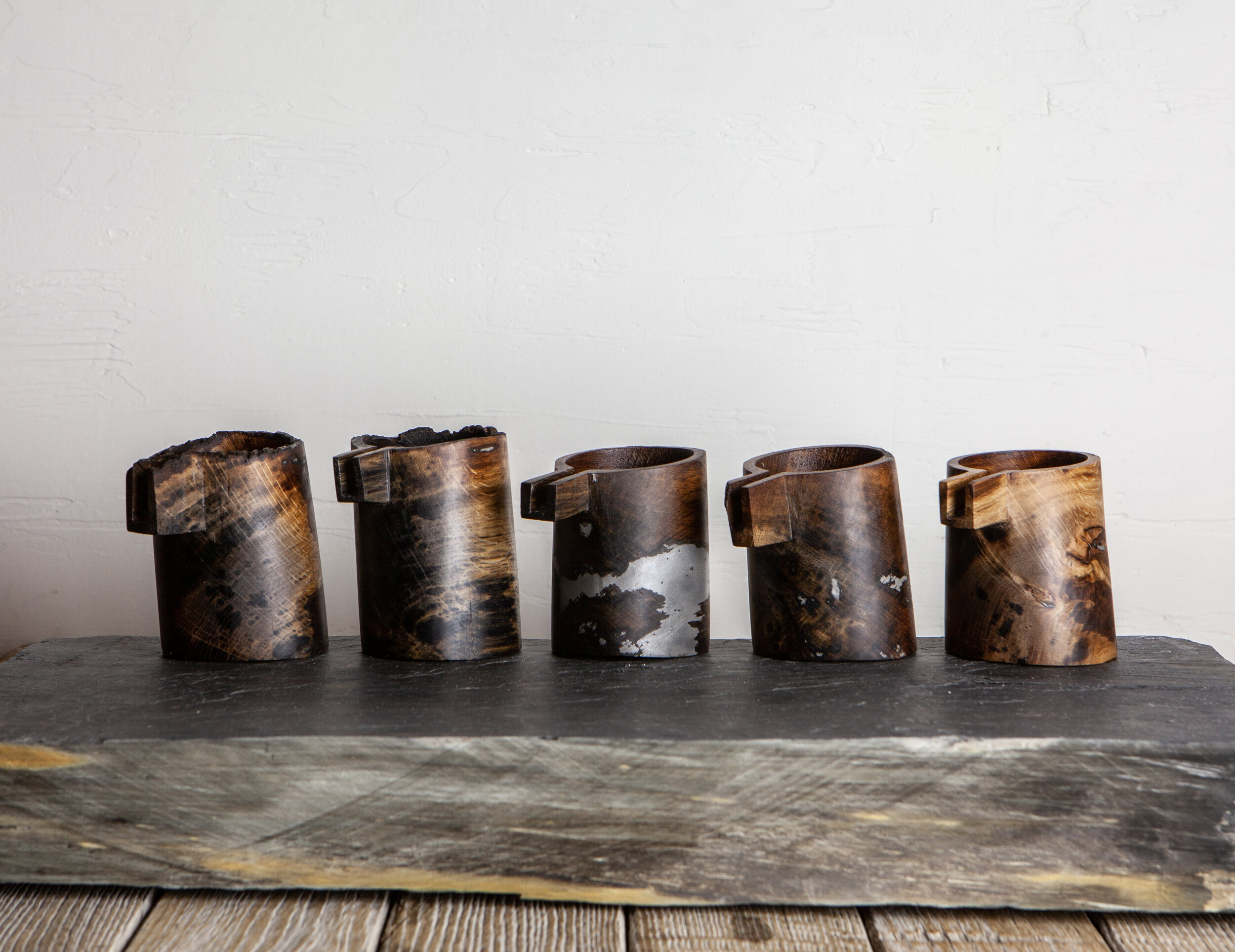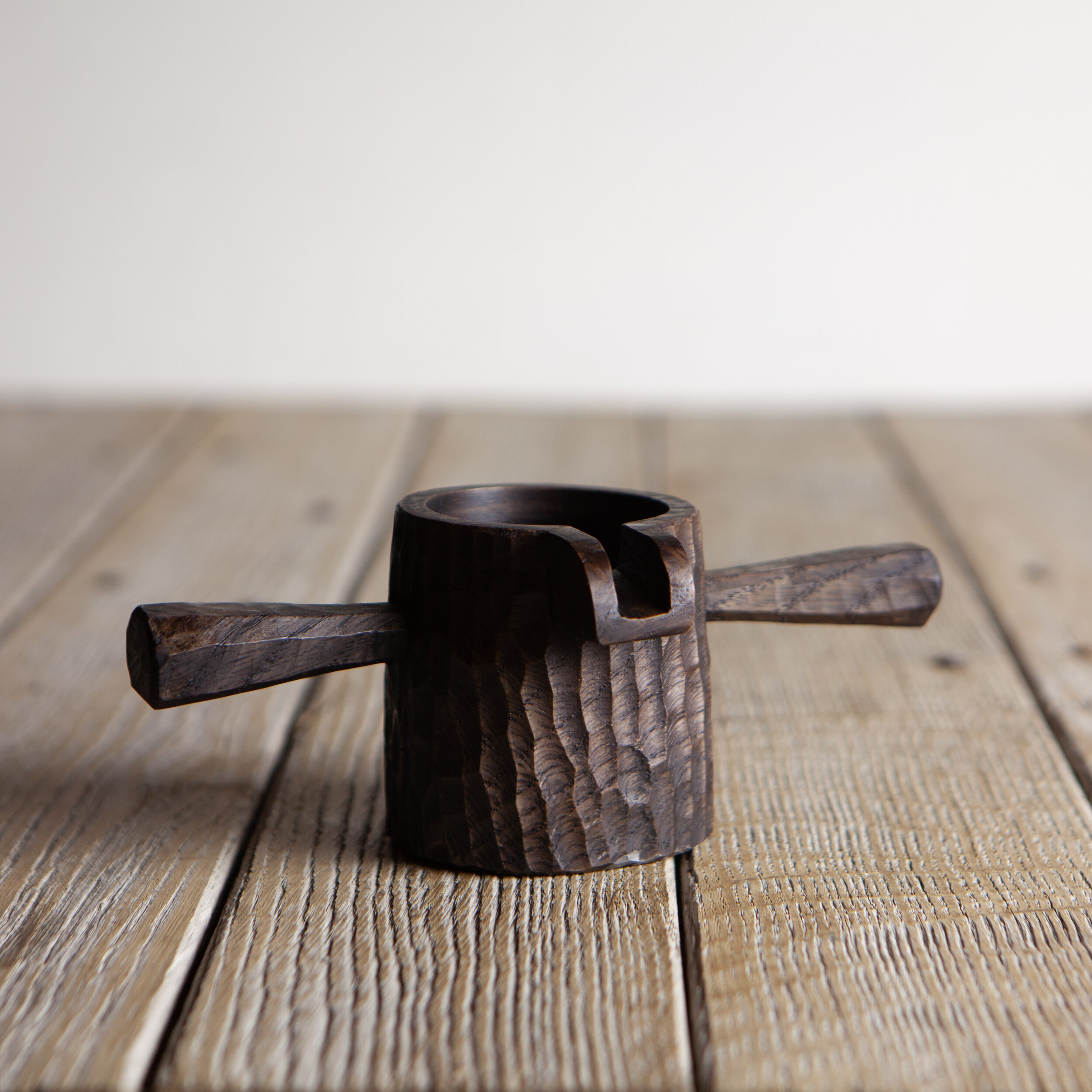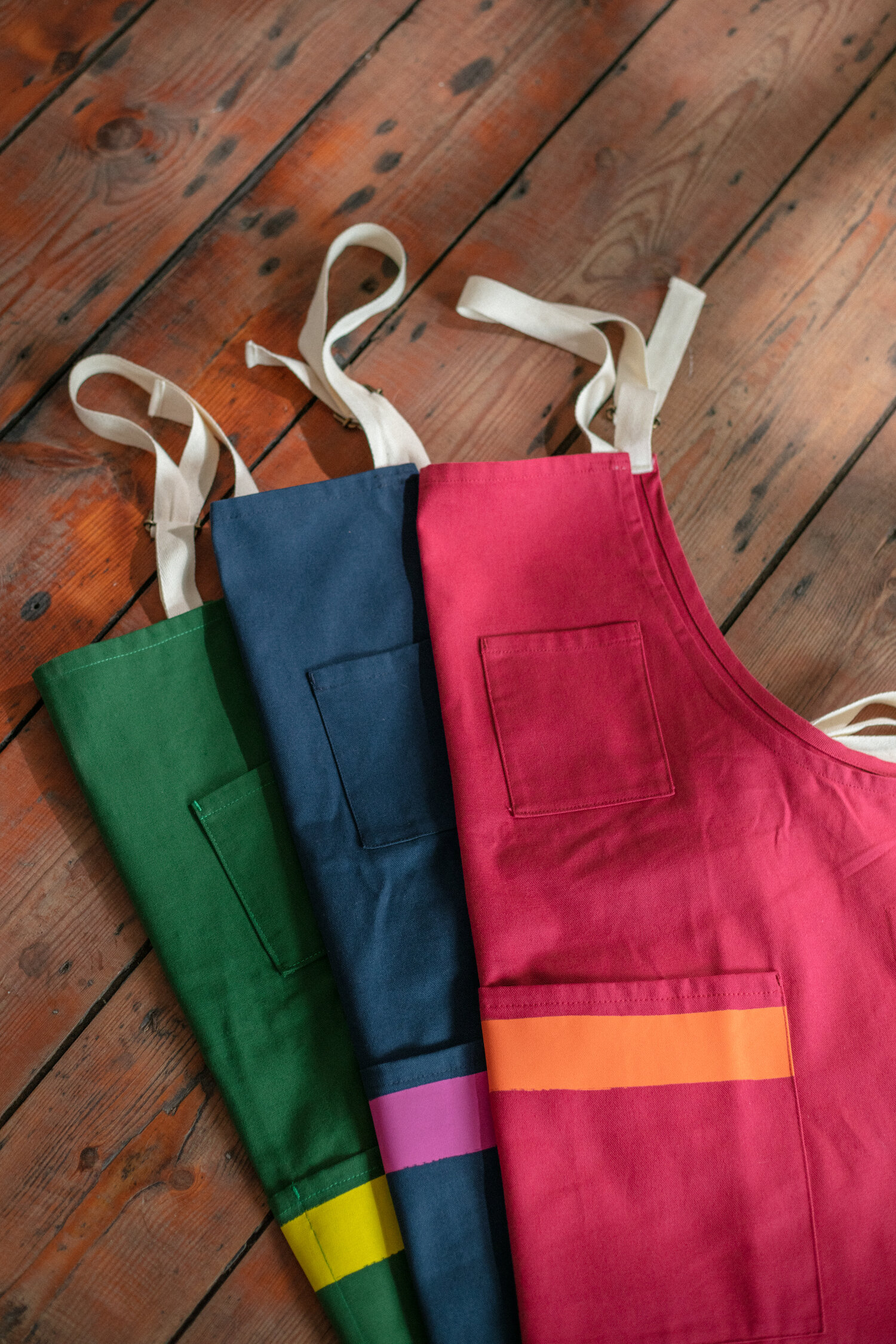The Whittlings: Mine Oak
By David White David White creates beautiful and practical tableware and vessels with traditional whittling tools. With a knowledge and a respect for nature, his pieces are carved considering the material he is working with.
Wearing a rock-climbing harness, helmet and head-torch, I lower myself on a rope down a steep man-made incline four hundred meters under a mountain in Snowdonia. I can’t see the bottom. I pass a side-tunnel, collapsed since the last time I was here, access blocked forever. I am looking for oak, deep inside a long-abandoned slate mine.
As I reach the bottom of the incline, close to the end of my fifty-meter climbing rope, the tunnel opens up into three low horizontal passages. Rail cart tunnels, used to remove slate from the mountain on small carts. Where there are rail lines there might be oak sleepers.
Image: The WhittlingsImage: The WhittlingsOak is one of the only woods that will stand being sat in water and will not rot away. There is a hole in the tunnel floor, dropping into a cavern below. The mine is a series of vast vertical caverns, connected by rail tunnels on different levels. My powerful head torch can’t penetrate the vast darkness of the cavern. A place full of memories of the past.
I find what I came for – in a stream of pure clear water, sat on a bed of slate slurry are oak sleepers. Using a saw under water, I free the wood from its bed of rubble and carefully load the wood on to my backpack. In this waterlogged condition each piece weighs around thirty kilos – I can only take one piece out at a time. With the wood secured I carefully retrace my steps back through the low slate tunnels to the surface. Only in the blinding light of the surface I notice everything I am wearing is covered in pale grey slate slurry.
I have been working with green wood professionally for six years. It started from a desire to shakeup my previous tech-heavy and busy, deadline-led design agency lifestyle and slow things down a little. Through making objects with green wood, I’ve developed a deeper connection and care for nature. It began through touch, feeling the different quality that each wood has. The beauty is in understanding that where a piece of wood is taken from -within the structure of a tree- effects its strength and tension. But also, it’s local geography, what else grew around the tree, even the weather effects the wood.
With a razor-sharp tool in one hand, green wood held in the other, I completely focus. Anything that was previously playing on my mind melts away. It’s the fastest path to being ‘in the moment’ I have found.
“The more I learn about the woodland the more balanced and harmonious the outcome of my work seems to be.”
When I get it just right, the piece I make may look contemporary but at the same time as if it’s been around for a hundred years.
But what if the landscapes where I source my wood, as well as the wood itself, influence what I make? That thought and perhaps the need for some adventure led me to the abandoned slate mines of Snowdonia. Nature is slowly reclaiming what was quite recently a busy industry on the mountainside. If you look hard enough, there is already living wood creeping back into the vast piles of discarded slate. The pioneer species, silver birch, is tentatively taking hold where it can find shelter from the mountain winds. I won’t disturb these fledgling trees scraping a living in the slate.
Image: The WhittlingsDeep in the mines, there is a resilient wood that has sat for over a hundred years in the streams and silty puddles of the mine tunnels – oak. Taken into the mines to help build the infrastructure to extract the slate; oak beams have been sat in the mineral-rich water, creating unique patterns of black and grey streaks through the grains of the now super dense wood. Rather wonderfully, because the oak has been in wet conditions underground for so long, I can actually use green woodworking techniques on this wood.
When collecting the oak from inside the mountain tunnels, it’s hard not to be influenced by the sense of history in the abandoned mines and slate mills. The functional tableware objects I make from this wood are strongly inspired by the hard lives of the miners and quarrymen that worked in the Welsh slate industry. As if these are the same cups and jugs the miners used themselves during their dark working days underground.
“The less tool work I can apply to the wood, the more the end piece seems to communicate the place the it is a part of.”
Green woodworking has taught me to be open to what the material and its environment suggest – listening deeply rather than forcing a preconceived idea. Mined oak taught me, unknowingly, how to be an artist.















